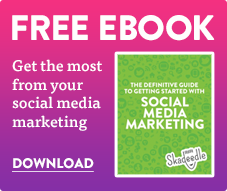As a small biz you've probably dabbled a bit in trying to get your business found on search engines. Under the broad umbrella of Search Engine Marketing (SEM), which includes both paid search as well as organic search engine optimization, there's a common strategy that involves focusing on what's known as “Long Tail” Keywords. It can be challenging to achieve high organic rankings for “Short Tail” or “Head” terms. and that's true for achieving a high position with paid search ads as well. By focusing on “long tail” keywords as part of your strategy, you can achieve a more desirable position while targeting the right people and at a lower cost. Does that sound complicated or tricky? It doesn't have to be and we'll give you the scoop on “long tail” versus “short tail” keywords as well as some of the benefits.
the broad umbrella of Search Engine Marketing (SEM), which includes both paid search as well as organic search engine optimization, there's a common strategy that involves focusing on what's known as “Long Tail” Keywords. It can be challenging to achieve high organic rankings for “Short Tail” or “Head” terms. and that's true for achieving a high position with paid search ads as well. By focusing on “long tail” keywords as part of your strategy, you can achieve a more desirable position while targeting the right people and at a lower cost. Does that sound complicated or tricky? It doesn't have to be and we'll give you the scoop on “long tail” versus “short tail” keywords as well as some of the benefits.
What are “long tail” keywords, and how do they differ?
Essentially, long tail keywords are keyword phrases made up of 3-5 words. They tend to have less traffic because they're not as popular as better-known “head” terms. “Head” terms, or “short tail” terms, refer to more commonly used words, for example, “running shoes.” These usually tend to be around two words. Because people will likely search those terms more often than “long tail keywords,” they bring in more traffic and are therefore more desirable. “Long tail” keywords on the other hand, are less popular but are more targeted to specific searches and come with less competition. We'll illustrate using the following example, “running shoes” versus “order running shoes online.” The first one is a head term, only two words, and the latter is considered a long-tail keyword, four words.
By looking at the example, as an advertiser, you're able to deduce a lot more of the searcher’s intent, which is why targeting these “long tail keywords” is important and can be a cost effective method to advertise your product or services.


What are the benefits?
More targeted – As mentioned above, one of the biggest benefits to long tail keywords is that you can better understand a searcher’s intent. By targeting these limited searches, your ad is likely to be a lot more relevant to what people are actually searching for versus searches with a more generic term. This will help you to focus more on these qualified buyers, which will boost conversion rates, as well as possibly lower your costs and increase ROI.
Less competition – Long tail keyword phrases are less popular and don't apply to all searches. Due to the low search volume of these terms, fewer advertisers will be competing for them. The less advertisers bidding on your phrase, means a higher potential for people searching to click on your ad and ultimately make a purchase.
Lower cost – Because pay-per-click marketing is essentially an auction for keywords or phrases, less competitors generally means you won’t have to bid as much for a particular keyword or phrase. This theoretically keeps average cost-per-clicks and CPAs lower than what you might spend on short tail keywords.
What are the negatives?
Limiting or limited traffic – Since your long tail keyword phrases may be really specific, you'll be losing out on potential impressions that would come from using “head” terms instead. Since not as many people use these phrases when searching, the search volume may often times be really low and won’t get that many people to your site. This is not necessarily a bad thing. It might not bring you the amount of people you would ideally want, but it will help you find qualified people and not spend your marketing dollars on those who aren’t likely to purchase. By focusing on multiple long tail keywords, you can potentially make up the search volume difference.
Under using terms that convert – If you're just starting out and are only using long tail keywords, you may be leaving out some more popular terms that can convert just as well. By using different match types and reviewing , you can help combat that and add in new keywords as your campaigns start to become more profitable or budgets increase.
How to find the best keywords for your campaign and tools to help
Researching long tail keywords doesn't differ much from developing other keyword lists. It's a good idea to start off by looking at competitor terms, as well as your own website analytics to get a better idea of what’s already driving people to your site. Building off of that in combination with other keyword tools like Google Adwords Keyword Tool and WordStream you should be able to come up with a good starting list.
Using “long tail” keyword phrases should be part of every SEM strategy as well as used in conjunction with some more popular “head” terms when possible. “Short tail”, or “head” terms, help capture searchers who are higher up the funnel, in the research or informational stage, and help bring awareness to your site. Long tail keywords will help capture people who may be looking for something specific and are therefore much more likely to be in the buying stage. The closer you target a person at the buying stage the more likely they are to make a purchase or take another desired action.
For more information and research tips visit PPC Hero and this post from VerticalResponse.
© 2013, Skadeedle. All rights reserved. Unauthorized use and/or duplication of this material without express and written permission from this blog’s author and/or owner is strictly prohibited.






 We’re excited to announce we're moving to
We’re excited to announce we're moving to
good stuff….
I’m in the process now of choosing keywords to focus on….trying to find keywords with local searches of around 1000 and in my target niche. My hope is to get at least 2 articles a week up (with some help) in hopes of seeing some results (leads/sales) in the next few months.